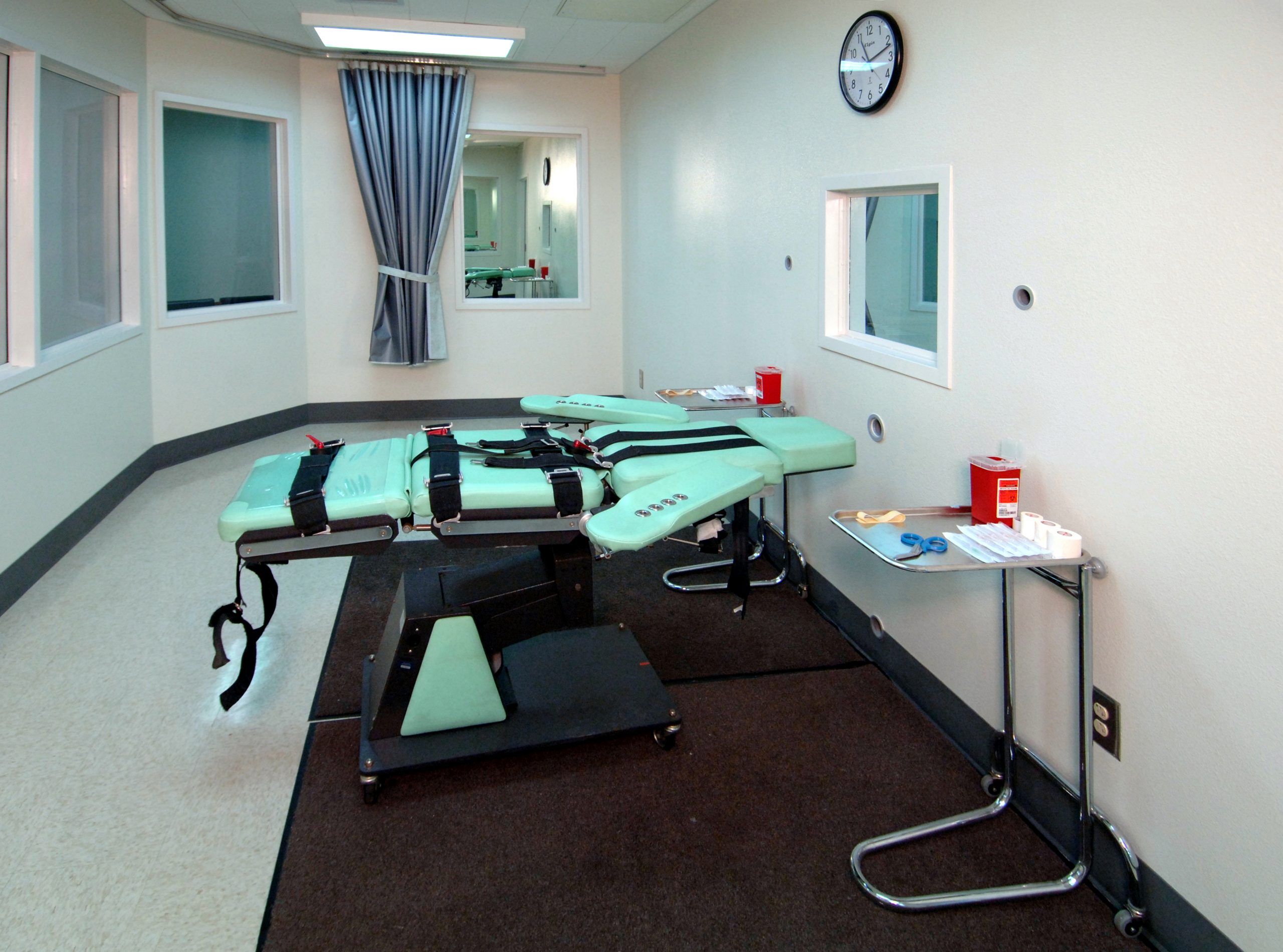The history of capital punishment in California dates back to the state’s early days. Initially, executions were carried out under the Criminal Practices Act of 1851, which allowed the death penalty to be carried out by county sheriffs. In 1872, the practice was incorporated into the state’s Penal Code, specifying that executions would take place within jails or other private locations, with strict guidelines for those allowed to witness the event.
Capital punishment at the county level continued until 1891, when a legislative amendment required that executions be carried out at state prisons, with the warden assuming the responsibility of overseeing the execution. This shift led to executions being conducted at both San Quentin and Folsom State Prisons. The first state-conducted execution took place at San Quentin in 1893, and Folsom saw its first execution in 1895. The method of execution was hanging, with a total of 215 inmates hanged at San Quentin and 92 at Folsom.
The Gas Chamber
In 1937, California replaced hanging with lethal gas as the primary method of execution. A gas chamber was installed at San Quentin, and the first execution by gas occurred on December 2, 1938. This method continued until 1967, when legal challenges and court rulings halted executions in the state for 25 years.
Unconstitutional?
On June 29, 1972, the Court decided in Furman v. Georgia, that the death penalty in certain cases was unconstitutional which led to the resentencing of 107 inmates to life without parole. The Court would clarify that ruling in a later case in 1976, allowing the death penalty under different circumstances.
In California, Proposition 7 (1978) was passed, reaffirming the death penalty under specific circumstances. The law detailed conditions for imposing the death penalty, such as murders committed for financial gain, murders of peace officers, and killings during certain crimes like robbery or rape. The death sentence could also be appealed, with automatic review by the California Supreme Court.
Despite the reinstitution of the death penalty in 1977, executions did not resume until 1992. In that year, Robert Alton Harris was executed in San Quentin’s gas chamber, marking the resumption of executions after a 25-year hiatus. In 1993, California allowed inmates to choose between lethal gas or lethal injection as their method of execution. The first execution by lethal injection occurred in 1996, when serial killer William Bonin was executed using this method.
However, the state’s method of execution came under scrutiny, and in 2006, the execution of Michael Angelo Morales was stayed after a federal court ruled that California’s lethal injection procedures posed a risk of excessive pain, violating the Eighth Amendment’s prohibition of cruel and unusual punishment. The ruling identified multiple flaws in the state’s protocol, including inadequate training and inconsistent record-keeping. California responded by revising its lethal injection protocols, focusing on better screening and training for execution team members and improving the facilities used for executions.
Despite these efforts, in 2012, the Marin County Superior Court ruled that the California Department of Corrections and Rehabilitation (CDCR) had failed to properly comply with the Administrative Procedure Act in implementing the revised lethal injection regulations. As a result, the court issued an injunction preventing executions from proceeding until new regulations were developed. This decision was upheld by the appellate court in 2013, further delaying any executions in the state.
Public opinion about the death penalty in California remained divided. In 2012, Proposition 34, which aimed to repeal the death penalty in favor of life imprisonment without parole, was put to a vote. However, 52 percent of voters rejected the initiative, maintaining the death penalty in the state.
The current state of Capital Punishment.
Right now, there are 2213 condemned inmates in the United States, with California currently housing 650 individuals; 630 men at San Quentin State Prison and 20 women at the Central California Women’s Facility. The death row population includes people ranging in age from their 20s to 90s, with the majority between 50 and 59 years old. In 2019 Governor Gavin Newsom declared a moratorium on executions in California has had a moratorium on the death penalty. But there are ongoing cases, including new sentences in 2023.
There have been 5 individuals exonerated and released from death row, demonstrating the potential for wrongful convictions. The National Academy of Sciences estimates that around 4% of those on death row could be innocent, suggesting that at least 28 people in California could be wrongfully condemned. The news is also going to pick up stories of the innocent individuals have been exonerated after being sentenced to death, highlighting the risks of executing the wrong people.
Is the Death Penalty racially biased?
The death penalty is often seen as racially biased, with historical roots in the discrimination of African Americans and other minorities. Due to this and to the greater number of minorities on death row, relative to their percentage of the population, many argue that the system is inherently unjust and unfair, reflecting the racism entrenched in American society. The numbers simply don’t bear that out, however.
African Americans, though only 5% of the state’s population, make up 34% of the death row population. Latinos, who comprise 39% of the state’s population, account for 26% of death row inmates. White inmates are the smallest group on death row at 32%, compared to their 35% representation in the general population.
Studies do show a bias in sentencing. Those convicted of killing white victims are more likely to receive the death penalty compared to those convicted of killing Black or Latino victims. That bias is not necessarily what it appears to be, however. To begin with, Black perpetrated crimes, including murder, have a lower resolution rate. Also, a comparatively greater portion of the black and Hispanic communities are victims of crime, including murder. These crimes are generally committed by their own race. So is the lower death penalty conviction rate of minority victims a bias against those convicted or the victims?
Financially, the death penalty is more expensive than life imprisonment. This is due to the two-phase trial process, extended post-conviction proceedings, and additional legal resources required for death penalty cases. Studies reveal that death penalty cases often take years to resolve, and one-third of death sentences between 1973 and 2013 were overturned. Such cases are typically resentenced to life imprisonment.
Effect on murder rates
The idea that the death penalty provides closure for victims’ families is contested. Many families of murder victims oppose executions, believing that they do not bring peace or justice. But this is not the only reason for the death penalty. It is pointed out that regions with higher execution rates also tend to have higher murder rates, while states without the death penalty or with lower execution rates generally have lower crime rates. But this may simply be seeing cause and effect in reverse – that the public demands the death penalty in response to an out-of-control murder rate.
Contrary to popular belief, law enforcement’s support for the death penalty is not universal. Some law enforcement groups questioning its effectiveness in preventing violent crime or protecting police officers. As the moral debate over the death penalty rages on, some sit on death row for decades. It generally comes as a surprise to people that most who die on death row are not executed. In fact, as stated above, of the 192 deaths of condemned inmates in California since 1978, only 13 were executed.
Learn more about Special Circumstances that can lead to the death penalty here.

